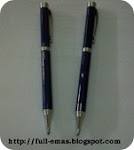History(Au), chemical element, a dense, lustrous, yellow precious metal of Group Ib, Period 6, of the periodic table. Gold has several qualities that have made it exceptionally valuable throughout history. It is attractive in color and brightness, durable to the point of virtual indestructibility, highly malleable, and usually found in nature in a comparatively pure form.
The history of gold is unequaled by that of any other metal because of its value in the minds of men from earliest times.Because gold is visually pleasing and workable and does not tarnish or corrode, it was one of the first metals to attract human attention. Examples of elaborate gold workmanship, many in nearly perfect condition, survive from ancient Egyptian, Minoan, Assyrian, and Etruscan artisans, and gold has continued to be a highly favored material out of which to craft jewelry and other decorative object.
In nature its size could be measured start from which is not seen by eyes (some micron, one micron is permil) until some centimeter. Big sized gold, some centimeters above called nugget, generally the in form of rock. One of the famous producer of nugget is Australia. Nugget couldn�t be easily found because of its size for examples like 'Welcome Stranger' weight 7,1 kg, 53x25 cm, found in1869 in the area of Victoria, 'Hand Of Faith' weight 22,7 kg, 46x18 cm, found in the area of Victoria also in 1980th, ' Golden EagleI', 38,4 kg, 66x30cm. Because there were such a big number of nugget found in Australia so that made a lot of amateurs use detector to look for it and even there were people who managed this seeking nugget in tour packet hunt.
Gold is widespread in low concentrations in all igneous rocks. Its abundance in the Earth's crust is estimated at about 0.005 parts per million. It occurs mostly in the native state, remaining chemically uncombined except with tellurium, selenium, and possibly bismuth. The element's only naturally occurring isotope is gold-197. Gold often occurs in association with copper and lead deposits, and, though the quantity present is often extremely small, it is readily recovered as a byproduct in the refining of those base metals. Large masses of gold-bearing rock rich enough to be called ores are unusual. Two types of deposits containing significant amounts of gold are known: hydrothermal veins, where it is associated with quartz and pyrite (fool's gold); and placer deposits, both consolidated and unconsolidated, that are derived from the weathering of gold-bearing rocks.
The origin of enriched veins is not fully known, but it is believed that the gold was carried up from great depths with other minerals, at least in partial solid solution, and later precipitated. The gold in rocks usually occurs as invisible disseminated grains, more rarely as flakes large enough to be seen, and even more rarely as masses or veinlets. Crystals about 2.5 cm (1 inch) or more across have been found in California. Masses, some on the order of 90 kg (200 pounds), have been reported from Australia.
Alluvial deposits of gold found in or along streams were the principal sources of the metal for ancient Egypt and Mesopotamia. Other deposits were found in Lydia (now in Turkey) and the lands of the Aegean and in Persia (now Iran), India, China, and other lands. During the Middle Ages the chief sources of gold in Europe were the mines of Saxony and Austria. The era of gold production that followed the Spanish discovery of the Americas in the 1490s was probably the greatest the world had witnessed to that time. The exploitation of mines by slave labor and the looting of Indian palaces, temples, and graves in Central and South America resulted in an unprecedented influx of gold that literally unbalanced the economic structure of Europe. From Christopher Columbus' discovery of the New World in 1492 to 1600, more than 225,000 kg (8,000,000 ounces) of gold, or 35 percent of world production, came from South America. The New World's mines--especially those in Colombia--continued into the 17th and 18th centuries to account for 61 and 80 percent, respectively, of world production; 1,350,000 kg (48,000,000 ounces) were mined in the 18th century. (source http://logammulia.com/)







![[Most Recent Quotes from www.kitco.com]](http://www.kitconet.com/charts/metals/gold/t24_au_en_usoz_2.gif)






0 Comments:
Post a Comment